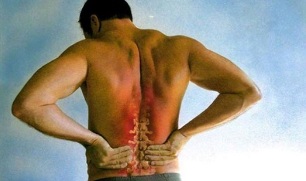
In general medical practice, back pain or lower back pain is the most common complaint of patients. In terms of the frequency of medical care requests, they rank second (after respiratory diseases). There are many diseases that cause pain. But the most common cause is lumbar osteochondrosis, and we will consider its symptoms and treatment in this material.
Relatively recently, medicine regards this condition as an age-related spinal change, which is related to the body's natural aging process.
Nowadays, lumbar osteochondrosis is considered a very serious disease, which occurs in people of all ages. Currently, the incidence rate has a steady trend toward younger age, and the disease is increasingly diagnosed in people under 30 years of age.
Cause of occurrence
The cause of the development of lumbar osteochondrosis has not been determined. But when faced with this pathology, one can usually assume who is more susceptible to this disease.
Precipitating factors:
- Passive lifestyle. This includes people who lead a sedentary lifestyle. In the sitting position, the muscles of the corset relax, which increases the burden on the lumbar spine.
- Hormone metabolism disorders and endocrine diseases will adversely affect the metabolism of spinal tissues and contribute to the development of osteochondrosis.
- Various congenital and acquired abnormalities in the structure of the musculoskeletal system-curved legs and spine, flat feet.
- Continuous unhealthy diet and daily diet, regular stress, insufficient sleep time, metabolic disorders.
The points listed above are the most common factors that cause the preconditions for disease development.
Degree of lumbar osteochondrosis
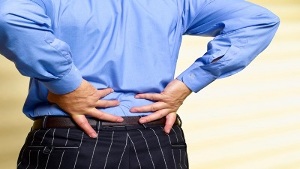
The manifestation of this disease depends on the degree of pathology.
Osteochondrosis is divided into four levels:
- The period of changes and movement of the nucleus pulposus in the intervertebral disc. Pain is caused by stimulation of nerve endings located in the annulus fibrosus and longitudinal ligaments. The patient feels local discomfort in the part of the spine where the affected intervertebral disc is located: acute pain or low back pain (low back pain) in the lower back, persistent dull pain (low back pain).
- Annulus fibrosus destruction period. It is characterized by an unstable appearance and increased mobility of the vertebrae, which results in continuous and lasting muscle tension. Patients will feel constant fatigue, discomfort, such as lower back muscles,
- The period when the annulus fibrosus ruptures and the nucleus pulposus exit exceeds its limit, forming a herniated disc. The so-called nerve root syndrome was observed, which is related to the compression of the nerve root by the falling debris.
- Severe deformation of the spine. The human body has difficulty in motor function. The main problem to be solved is the patient’s disability. However, it must be emphasized that at this stage of the disease, there is almost no pain. But this is not a signal to stop the disease, on the contrary.
- There is pathological hyperplasia of bone tissue, which will make the condition worse.
How to treat lumbar osteochondrosis will directly depend on the extent of the disease; for this, drugs, non-drug therapies and exposed surgical methods are used.
Symptoms of lumbar osteochondrosis
When lumbar osteochondrosis occurs, the main symptom is pain. The nature of the pain sensation, the place of origin and the direction of propagation depend on which receptors are stimulated, that is, how much the intervertebral disc and surrounding tissues have changed, herniated or already hernia, the direction of herniation, etc.
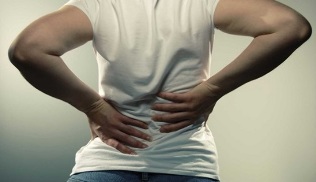
Let us list the main symptoms of lumbar osteochondrosis:
- Lumbar spine pain, natural pain, sudden increase in movement, changes in body position, and staying in one position for a long time. It reduces pain when in a horizontal position;
- The curvature of the lumbar spine is very common. Based on where the curvature is observed, we distinguish scoliosis (curvature of the spine to the left or right), scoliosis (anterior curve) and kyphosis (kyphosis).
- If osteochondrosis causes spinal cord clamping and dysfunction, the patient's urine and feces may be out of control.
Additional features:
- Waist skin, numbness in buttocks and cold buttocks;
- Dry, peeling, blue skin on the lower back and buttocks;
- Violating buttocks and sweating;
- Urination disorders;
- Erectile dysfunction.
These symptoms indicate the onset of disease and require medical intervention. Treatment of osteochondrosis can be done in hospitals and at home.
Diagnosis
In order to confirm the diagnosis, use the diagnostic equipment to send the patient for examination:
- MRI-used to make a clear diagnosis.
A correct diagnosis will help to understand how to treat lumbar osteochondrosis, and what drugs and procedures are needed for this.
Complications
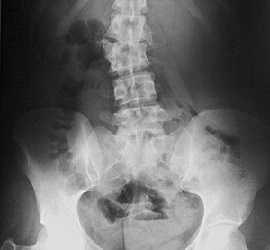
Lumbar osteochondrosis may cause herniation and hernia due to the huge load on the vertebrae. These complications develop quickly, so it is very important to treat them in time.
In addition, rickets can be complicated:
- Inflammation of the sciatic nerve;
- Spondyloarthropathy;
- Schmorl’s hernia;
- Osteophytes, spondylosis;
- Spinal stenosis with spinal cord compression and dysfunction; Compression of horseshoe nerve, pelvic organ dysfunction;
- me feet;
- Paralysis of the lower limbs.
The progress of complications can be prevented through timely diagnosis and complex treatment.
Treatment of lumbar osteochondrosis
When lumbar osteochondrosis is diagnosed, extensive comprehensive treatment is needed, including:
- Moderate physical activity;
- use drugs; Spinal traction
- Manual therapy;
- Physiotherapy;
- Massage.
The treatment plan for osteochondrosis is aimed at:
- Eliminate inflammation process;
- Strengthen the muscles of the waist, buttocks, and legs;
- Eliminate pathological muscle tension;
- Improve the function of pelvic organs;
- Regulate the blood circulation and metabolic process of the affected area;
- Restore the normal range of motion of the lower back and increase the sensitivity of the lower limbs.
Surgery is only used in a few cases.
Drugs
This treatment for lumbar osteochondrosis includes taking pills, injections and topical (ointment and gel) medications. The drugs used to fight this disease relieve pain and stop inflammation.
Depending on the performance, the doctor may prescribe different medicines for lower lumbar spine chondropathy:
- Analgesics (pain relievers);
- Non-steroidal anti-inflammatory drugs;
- Muscle relaxants, used to relieve muscle cramps caused by pain;
- Cartilage protective agent to restore cartilage tissue;
- Corticosteroids (if all other treatments are ineffective, it should be noted);
- Vitamin preparations.
In the treatment of osteochondrosis, pills to calm the nervous system and antidepressants to fight stress and depression are usually prescribed.
Physical therapy of lumbar osteochondrosis
Generally, drugs alone are not enough to treat osteochondrosis. Physical therapy procedures can be used to eliminate pain, relieve muscle spasms, and stimulate metabolism and recovery processes:
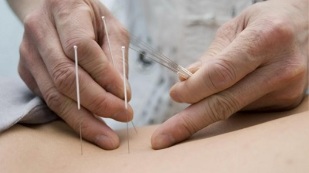
- amplifier;
- make a voice;
- Seepage current;
- darsonvalization;
- Magnetic resonance therapy;
- Laser therapy.
Massage should be performed when the main pain symptoms are eliminated or the chronic pathology is relieved. It can relax tense muscles. Usually used in conjunction with a warm-up routine or sauna. This will help increase the relaxing effect on muscle tissue and stimulate blood circulation.
Manual therapy is only performed by experts in the field. It can increase blood circulation in the spinal cord and replace the displaced discs of the spine.
Remedial gymnastics
All physical exercises for diagnosing lumbar osteochondrosis should help increase lumbar spine mobility.
If you practice from time to time, remedial gymnastics will not be effective. The main principle of exercise therapy is regularity. Constantly performing certain exercises will help eliminate the destructive process of intervertebral joints.
Surgery
Generally, doctors will order surgery only when there are serious complications. For example, intervertebral hernia. The most common type of surgery is the removal of a damaged disc (discectomy).
In this case, this operation is considered to be the most effective method, but at the same time, it is only prescribed if other treatments do not produce results within six months. In addition, microsurgery and endoscopic treatment of the spine are extensive.

























